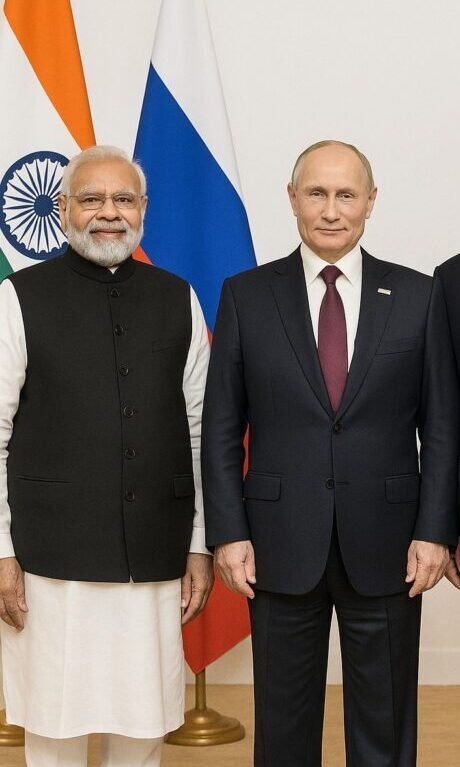U.S. President Donald Trump has once again issued a stern warning to BRICS nations, threatening to impose tariffs and accusing the group of attempting to undermine the dominance of the U.S. dollar. His latest remarks have stirred diplomatic activity among key BRICS members—India, Russia, and China—who are now working to enhance their trilateral cooperation.
Trump, speaking at the White House on Friday, claimed that BRICS is “a small group that is rapidly falling apart.” He accused the alliance of trying to challenge the global supremacy of the dollar. Though he did not name specific countries, he hinted that any attempts to weaken the U.S. financial system would be met with economic retaliation.
“When I heard about this BRICS group, I made it clear: we’ll impose a 10% tariff on every country involved. The next day, they were supposed to meet—almost no one showed up,” Trump said, mocking the group.
His comments come just days after the 17th BRICS Summit, held on July 6–7 in Rio de Janeiro, Brazil. Following that summit, Trump threatened to add an additional 10% tariff on any country aligning itself with what he described as “anti-American BRICS policies.”
The Rio Declaration emphasized reforming global governance and expressed concern over the increasing use of unilateral tariffs and non-tariff measures, which, it said, violated WTO norms. While the document did not mention the U.S., the message was clear: BRICS is opposing economic coercion and advocating for a multilateral trading system.
India, Russia, and China have since renewed efforts to strengthen the RIC (Russia-India-China) trilateral format, which had seen a lull since the India-China border clashes in 2020. Russian Deputy Foreign Minister Andrey Rudenko recently confirmed Moscow’s intention to revive RIC dialogues.
Chinese Foreign Ministry spokesperson Lin Jian echoed this sentiment, stating that trilateral cooperation benefits not only the three countries but also contributes to global peace and stability. Lin affirmed China’s readiness to engage in continuous dialogue with India and Russia.
India’s Foreign Minister S. Jaishankar’s recent visit to China for the SCO meeting further signals a thaw in relations. During a bilateral meeting, Chinese Foreign Minister Wang Yi criticized unilateralism and power politics, emphasizing the need for mutual cooperation between India and China.
Amid growing tensions, experts in China have analyzed the shift in U.S.-India relations. An article by Professor Zhi Chao of Fudan University alleged that the U.S. is using Pakistan to control India and creating friction through forced diplomacy. Another commentator, Professor Jin Canrong, noted that India was “disappointed” after Trump hosted Pakistan’s military chief at the White House while skipping a meeting with Prime Minister Modi during the recent G7 summit.
On the economic front, BRICS nations have made moves to reduce reliance on the U.S. dollar. China has already been trading with Russia in yuan, and similar currency agreements are being explored with Brazil, Saudi Arabia, and India. President Xi Jinping has openly supported conducting trade in local currencies across Asia, Africa, and Latin America.
The move comes amid mounting Western sanctions on Russia, including its exclusion from SWIFT—an international financial messaging system controlled largely by the West. This has fueled BRICS’ motivation to create alternative financial infrastructure.
According to Robinder Sachdev, President of The Imagindia Institute, “Even if BRICS doesn’t develop a new currency immediately, they’re at least working towards building a financial network independent of Western control.”
He adds that creating a true alternative to the dollar remains a distant goal. “The dollar remains dominant, but signs of a new trend are emerging,” Sachdev said. “China has made currency deals with Brazil and Saudi Arabia. India is trading with Russia in rupees. It’s early—but the shift has started.”
As global geopolitics continue to shift, Trump’s combative stance could accelerate efforts by BRICS to challenge dollar hegemony, even if a full-fledged alternative remains years away.








